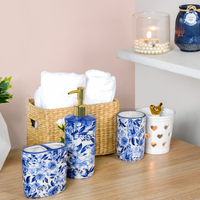The festival of Shardiya Navratri, or Durga Puja, is dedicated to Goddess Durga. According to Hindu mythology, Devi Durga is the human manifestation of Adi Shakti, the power of the universe that does not have any form and is abstract. The goddess Durga takes different forms to destroy the evil forces of the universe.
The significance of Navratri, or Durga Puja, is immense because this festival is celebrated for the fact that Goddess Durga defeated the bull-headed demon Mahisasura and the victory of good over evil. During this time, it is believed that Devi Durga, the Mother Goddess, returns to her maiden home, which is her planet Earth. During the puja, devotees celebrate her incredible power and might and pay tribute to all her nine forms on the nine days of the puja.
The festival begins on Pratipada, which is the first day of the Ashwin month during Shukla Paksha, which is the waxing phase of the moon. The first ritual that takes place on the first day is “Ghata” or “Kalash Sthapana,” where worshippers keep a “Kalash” or pot with a brown coconut having a husk, adorned with mango leaves, in their puja room. In this blog, we will explore all the Durga Pooja Samagri that you need to celebrate and worship Goddess Durga according to Durga Pooja Vidhi.
Durga Pooja essentials for Durga Pooja 2023
To follow the Durga Pooja Vidhi for Durga Pooja 2023, you need a proper list of items to ensure that you have all the Durga Pooja essentials for every ritual. You need specific items for each of the four days of Durga Pooja to follow the detailed method of worshipping Goddess Durga as mentioned in the holy scriptures. Here is a Durga Pooja Samagri list for each of the four days, which should be collected beforehand so you can perform every ritual smoothly.
Food Offerings for Naibedya or "bhog":
According to Durga Pooja Vidhi, the necessary food offerings for the rituals and worshipping of Goddess Durga include ghee, milk, curd, honey, puri, and chane on the first day. For the second day, food offerings for Durga Pooja essentials include singhara ke laddoo and kuttu ka halwa. For the fourth day, malpua and imli wale chawal are part of the Durga Pooja item list.
Flower offerings:
On the first day of Navratri, you can offer hibiscus flowers to the Goddess Shailputri, who is the daughter of Himalaya, also known as the King of Mountains. For the second day, you can offer chrysanthemum or Shevanti flowers to Goddess Brahmacharini. The lotus is offered to Chandraghanta, the third form of Goddess Durga, on the third day of Navratri.
Since Devi Kushmanda is said to be fond of jasmine flowers, these are offered to the goddess on the fourth day of Navratri. Yellow flowers should be on the Durga Pooja Samagri list when you are buying Durga Pooja essentials for the fifth day of Navratri to worship Devi Skandamata. Marigolds are said to be the favourite of Devi Katyayani, and these flowers should be on your Durga Pooja Samagri list for the sixth day. You could also offer her yellow jasmine along with honey.
Offer Krishna Kamal or Passiflora flowers to the Kaalratri form of Goddess Durga on the seventh day of Durga Pooja. On the eighth day of Navaratri, Mogra, or Arabian Jasmine, is offered to the Mahagauri form of the Goddess Durga. The ninth manifestation of the goddess, Siddhidhatri is offered Champa flowers.
Clothes offerings:
Clothes offerings that are part of the Durga Pooja essentials include a sari for Chandi, a dhoti for Vishnu, along with clothes for Shiva, Lakshmi, Saraswati, Kartik, Ganesh and the demon Mahisasura and their mounts including ox, buffalo, mouse, lion, owl, peacock and the nine planets. Besides clothes, noserings, finger rings, iron is also included in the Durga Pooja Samagri list.
Extensive Durga Pooja items list and Samagri:
An extensive list of Durga Pooja essentials is given as follows-
- A Kalash made of brass, silver, copper, or bronze. You should not use steel or plastic.
- A whole brown coconut containing husk
- Mango leaves and betel leaves
- Haldi
- Kumkum
- Chandan
- Akshat
- Ganga jal
- Earthen trays, plates and diyas
- Brown soil or clay
- Nine different seed grains
- Sesame, mustard oil or ghee for lamp (for Akhand Jyot)
- Cotton wicks
- Brass/silver lamp
- Dhoop/ agarbatti or incense sticks
- Paan and supari
- Chandan
- Camphor (Kapur)
- Sacred thread (red and yellow)
- Laung-elaichi (clove, cardamom)
You will also need sweets, fruits, proper naibedya or bhog, and Pooja thali or trays for arranging the necessary Durga Pooja essentials.
At Nestasia, you can find several luxurious platters and trays that you can use during the rituals in Navratri. Besides that, you can use the Urli pieces as part of your Durga Pooja essentials as well. These are pooja items that you can find easily at home and use for multiple items. You could also decorate your home with opulent showpieces and festive decorations like wall hangings, door hangings, and torans for the festive season.
Conclusion
Since Durga Pooja is one of the most important festivities in Hindu culture, it is important that you celebrate it well and perform all the rituals in the proper way with proper Durga Pooja essentials. Each ritual has its own significance and must be performed with the necessary pooja items. Performing the ritual with the proper Durga pooja essentials will enable you, as a devotee to immerse yourself in the enriching experience of this festival and connect with the divine.




















